Christina L. Simms, Conservator of Objects and Sculpture, and Marcin Pikus, Conservator of Stone Sculpture and Architectural Features, both of McKay Lodge Conservation Laboratory, recently completed the restoration of a World War I Soldier in Columbus, Ohio. The monument, Victorious Soldier, currently resides in front of the Ohio History Connection. It was sculpted in 1924 by artist Bruce Wilder Saville, and it features a triumphant WWI infantryman on a limestone base.
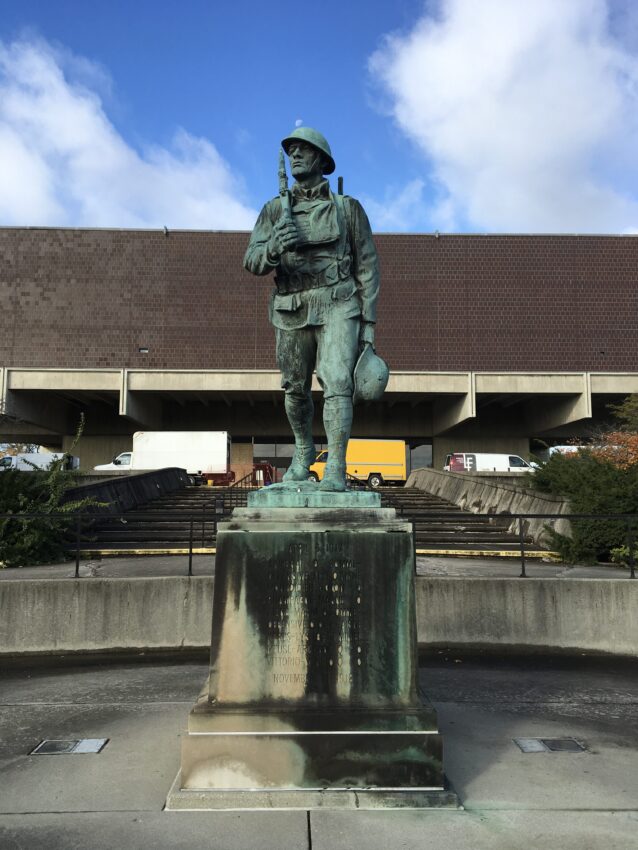
The beginning of World War I occurred just ten years earlier, and it was a war of many firsts including: chemical warfare, flamethrowers, filmed propaganda, wireless communication, aerial warfare, enlisted women, and tank battles. The total number of military and civilian casualties is estimated at a staggering 40 million, and the final months of the “Great War” were also marked by the 1918 pandemic.
The sculpture by Bruce Wilder Saville, though not forgotten, was in need of conservation treatment in the last few years. Weathering had corroded the surface of the bronze as seen by pale green and black streaks, which in turn, trickled onto the limestone base. The joint material on the base had also begun to fail, and required general maintenance.
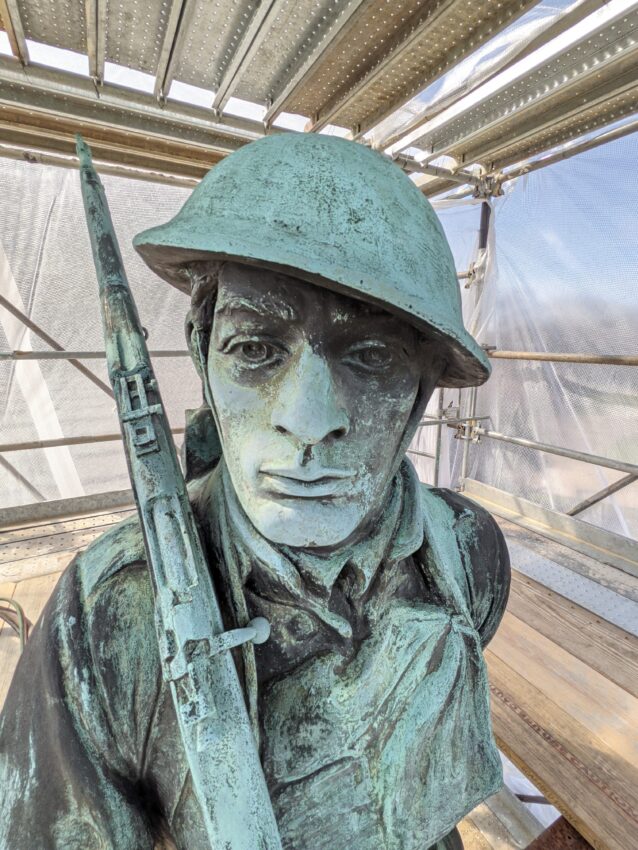
As part of the restoration of the World War I Solider in Columbus, Ohio, the bronze needed to be cleaned, repatinated, and recoated. The limestone base also required treatment by reducing corrosion run-off from the surface and repointing joints. Since the surface of the bronze was so corroded, none of the original patina remained and the heavy corrosion prevented any chemical repatination.
A water-borne blasting system using a German proprietary JOS vortex nozzle, mixing water and a fine abrasive, was used to reduce the corrosion on the bronze surface, and it has been used by McKay Lodge conservators in the past for similar treatments. The process is more gentle on the artwork than traditional abrasive blasting techniques, but it still requires containment to prevent the media from drifting from the work area. A system scaffolding and containment was erected for this purpose as part of the restoration of the World War I solider in Columbus, Ohio.
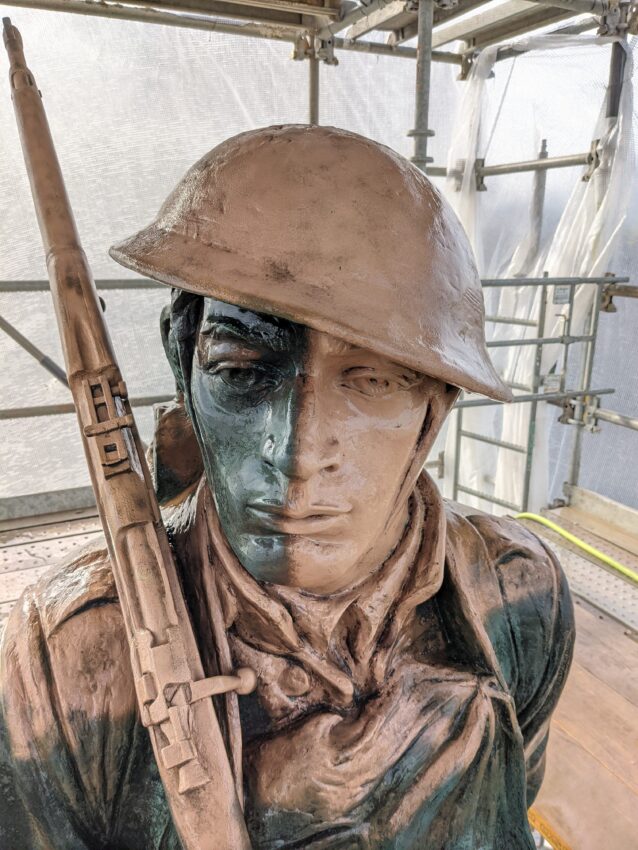
Years of corrosion were gradually removed, revealing the original bronze underneath. Features once obscured are now clearly defined as the sculptor intended them. After clearing the blasting media from the surface, it was now time for art conservator Christina L. Simms to perform a chemical patination applied with heat to return the bronze to a statuary brown color.
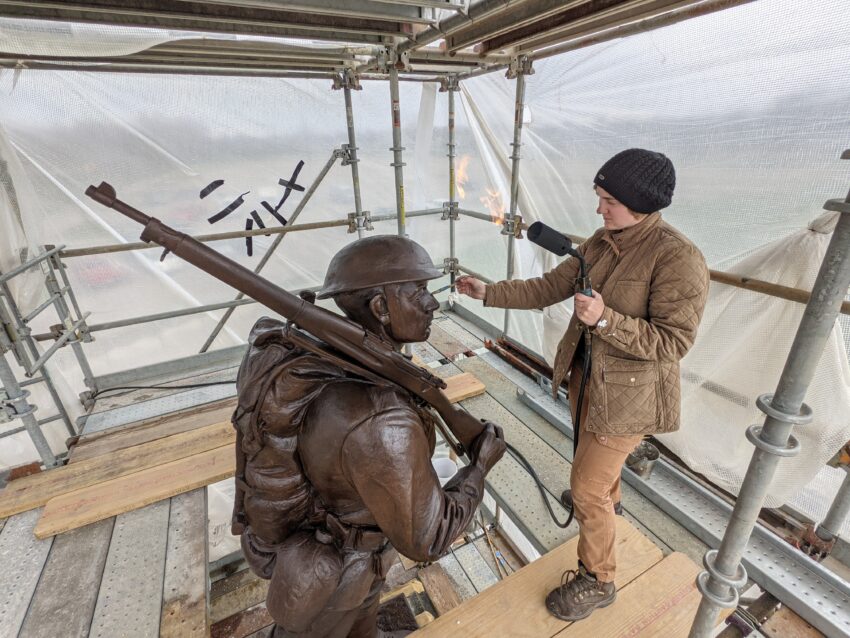
She began slowly building the color until the desired effect was achieved, but this is not the final step. A protective wax coating also applied with heat was brushed onto the bronze.
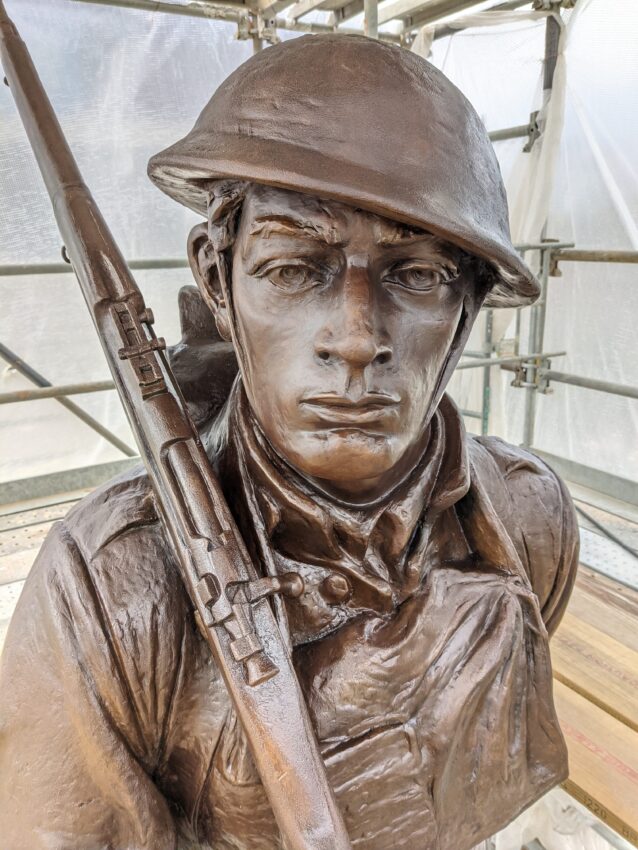
This layer of wax will not only protect the bronze and patina from deterioration, if properly maintained, but it saturates the surface to an aesthetically pleasing color and sheen; Victorious Solider would have originally looked this way when the monument was first installed. The coating will also prevent future corrosion run-off from staining the base.
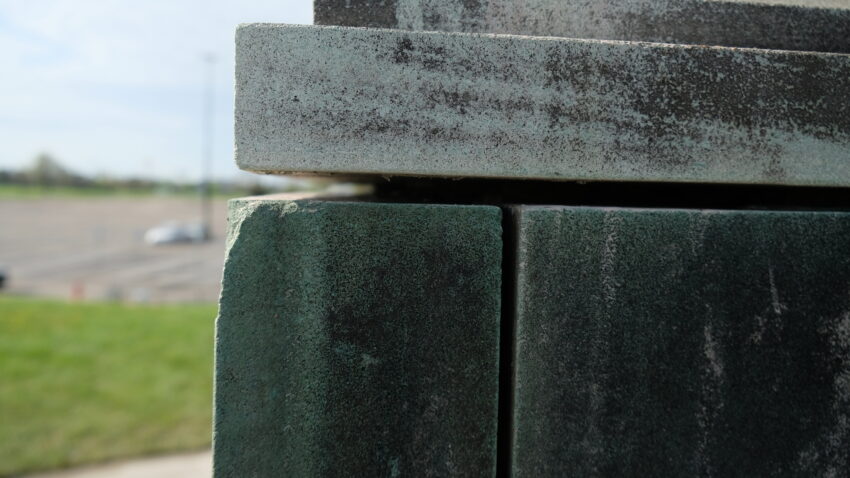
Conservator Marcin Pikus could then begin the conservation treatment of the limestone base with the bronze conservation treatment complete. The failing and cracked joint material was removed, and the stone was treated for removal of biological growths. This left the tenacious corrosion run-off staining which had embedded itself in the porous stone over many years. Conservator Pikus used a series of cleaning products and repeated applications to reduce the staining as much possible.
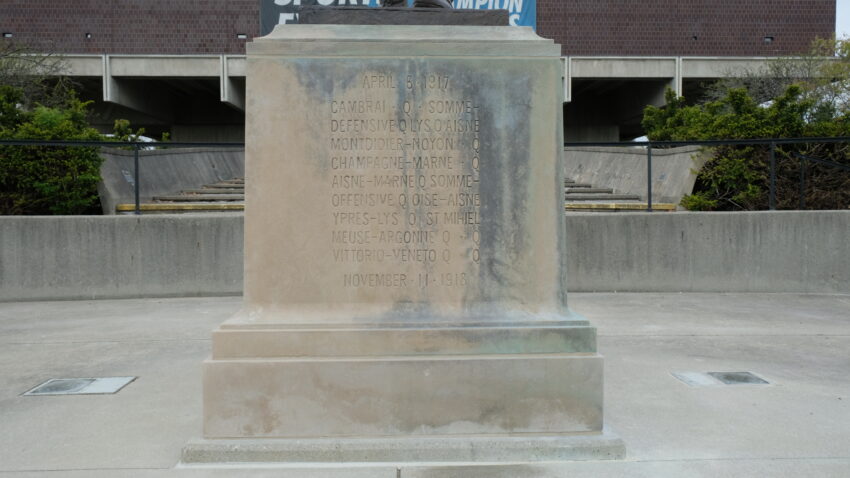
Joints were then repointed with a preservation mortar, and the seam between the base and pavement was caulked to complete the restoration of the World War I Solider in Columbus, Ohio.
After treatment, the bronze and stone base have greatly improved in appearance. Some staining on the base remains, but additional corrosion run-off with proper coating maintenance can be prevented in the future.
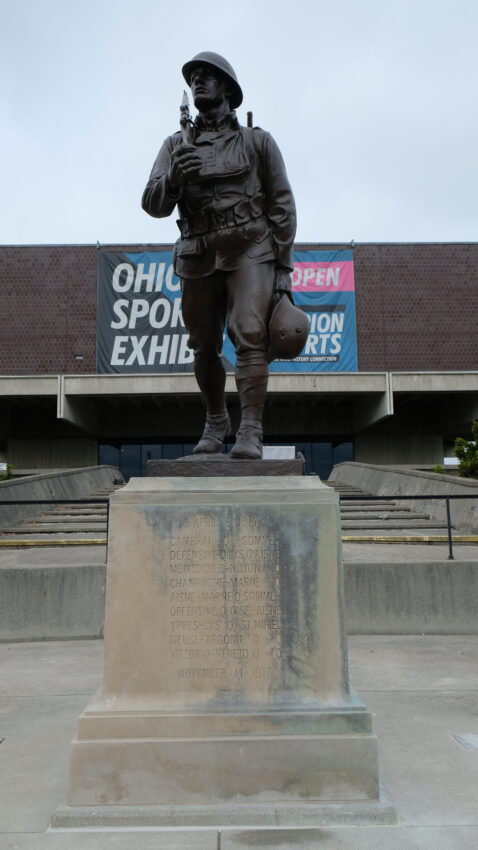
The Ohio History Connection, formerly the Ohio Historical Society, in its own words “…is a statewide history organization with the mission to spark discovery of Ohio’s stories.” You can visit the Ohio History Center in Columbus, Ohio, or check out the other 50 historic sites and museums managed by the Ohio History Connection throughout the state of Ohio.
